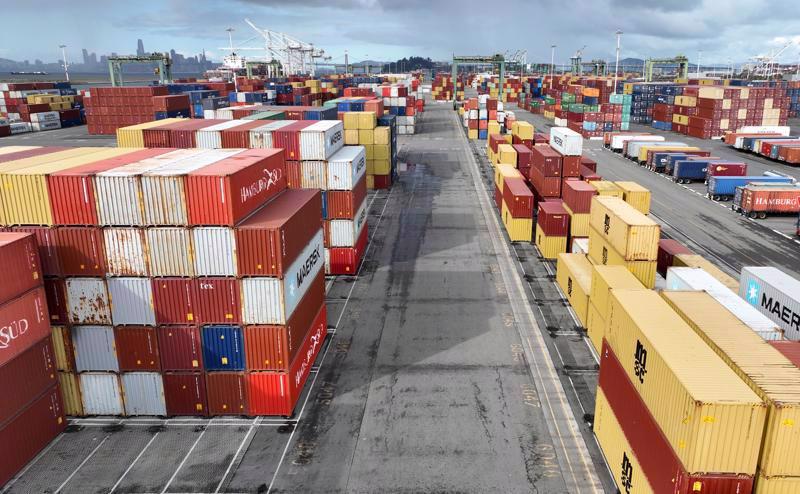Vietnam’s trade performance will reach targets set for 2024 if existing trends continue over the remainder of the year.

The General Statistics Office (GSO) has reported that total import-export turnover in September stood at $65.81 billion, an 8 per cent decline against August but a 10.9 per cent increase compared to September 2023. Total trade turnover in the first nine months reached $578.47 billion, a 16.3 per cent increase year-on-year, with exports up 15.4 per cent and imports 17.3 per cent.
30 exports hit $1 billion
Exports totaled $34.05 billion in September, down 9.9 per cent month-on-month but up 10.7 per cent year-on-year, while total export turnover hit $299.63 billion in the first nine months, a 15.4 per cent year-on-year increase. The domestic sector contributed $83.47 billion, up 20.7 per cent and accounting for 27.9 per cent of the total, with the FDI sector, including crude oil, reaching $216.16 billion, up 13.4 per cent and representing 72.1 per cent of the total.
Thirty products posted export value above $1 billion in the first nine months, or 92.3 per cent of total exports. Seven of these surpassed $10 billion, contributing 66.4 per cent of the total.
By category, fuel and mineral products stood at $3.29 billion in the nine-month period, making up 1.1 per cent of the total. Primary industrial products came in at $263.47 billion, or 87.9 per cent, while agricultural and forestry products totaled $25.64 billion, or 8.6 per cent, and fisheries $7.23 billion, or 2.4 per cent.
Imports, meanwhile, totaled $31.76 billion in September, a 5.9 per cent decline against August but an 11.1 per cent increase compared to September 2023. Total import turnover in the first nine months amounted to $278.84 billion, up 17.3 per cent year-on-year, with the domestic sector totaling $100.85 billion, a rise of 18.8 per cent, and the foreign-invested sector $177.99 billion, up 16.5 per cent.
In terms of import structure, production materials totaled $261.5 billion, accounting for 93.8 per cent of the total, with 47.3 per cent being machinery, equipment, and tools, and 46.5 per cent raw materials and fuels. Consumer goods totaled $17.34 billion, representing 6.2 per cent.
Target within reach
In its assessment of import-export activities in the first nine months of 2024, the Ministry of Industry and Trade (MoIT) highlighted that trade continues to shine as a notable area of growth, indicating a strong ongoing recovery compared to the same period last year. Exports increased across all product categories, with the domestic enterprise sector growing nearly twice as fast as FDI enterprises, which is a highly-encouraging trend.
Ms. Phan Thi Thanh Xuan, Vice Chairwoman and General Secretary of the Vietnam Leather, Footwear, and Handbag Association (Lefaso), told VET / VnEconomy that the industry is progressing well, with stable order volumes received at competitive prices.
Export turnover in the industry reached $16.53 billion in the first nine months and is anticipated to come in at some $27 billion for the year as a whole, which would represent a 12 per cent increase compared to 2023.
“The turnover target for the year is realistic, as export orders are typically concentrated in the closing months, with the Lunar New Year, or Tet, holiday falling in January,” she explained. “Companies can therefore increase their efforts to fulfill and complete orders in December.” She also mentioned that given the positive trends in key export markets, the leather, footwear, and handbag industry aims for a 10 per cent increase in exports next year.
The textile and garment industry, meanwhile, has also experienced impressive and stable growth this year, with export turnover reaching $27.34 billion in the first nine months, an 8.9 per cent increase year-on-year. Mr. Vu Duc Giang, Chairman of the Vietnam Textile & Apparel Association (VITAS), said the industry is witnessing steady development at this time of the year, with sufficient new orders at competitive prices for exports to 104 markets worldwide. With such momentum, the textile and garment industry is projected to post export turnover of $43 to $44 billion in 2024.
Challenges ahead
While there is optimism regarding trade as the end of 2024 approaches, experts, association representatives, and government officials have identified several challenges that may impede the country’s ability to achieve its trade objectives for the year.
Among these challenges is a labor shortage, particularly in labor-intensive industries like textiles and footwear. Though the steady growth being seen in new orders enhances profits for local companies, it also puts significant pressure on the labor market to supply enough workers. Moreover, as a country with substantial trade volumes, Vietnam is increasingly confronted with various protection measures imposed by economies around the globe, including major markets like the US, India, and Australia.
New technical standards and the need for green and sustainable development are also persistent challenges for Vietnamese businesses, especially when exporting to major markets such as the EU and the US. In the short term, the impact of the recent Typhoon Yagi, which caused significant property damage estimated at $3.3 billion, will also affect Vietnam’s trade activities.
To tackle these challenges, the GSO has proposed several solutions to boost Vietnam’s import-export activities over the remaining months of 2024. Solutions include boosting exports to major markets and markets of potential, effectively utilizing signed trade agreements, and diversifying both import and export markets. Suggested measures also involve efficiently implementing trade promotion activities, connecting supply and demand, removing obstacles, and facilitating export processes, particularly regarding customs clearance procedures; as well as assisting businesses in adjusting production to meet new standards set by export partners.
The MoIT has outlined various measures to be taken, including closely monitoring market trends and the import-export policies of other countries to keep associations and businesses informed.
In addition to prioritizing export promotion activities in key markets and maximizing the benefits from free trade agreements (FTAs) such as the Comprehensive and Progressive Agreement for Trans-Pacific Partnership (CPTPP), the EU-Vietnam Free Trade Agreement (EUVFTA), and the Regional Comprehensive Economic Partnership (RCEP), the MoIT will also accelerate negotiations, signings, and approvals of new FTAs and economic partnerships, particularly with Israel and the UAE, to diversify markets and supply chains and enhance exports. It will also support businesses in conducting trade promotion efforts in new markets and markets of potential that individual companies may not yet be able to enter directly.
Furthermore, it will direct Vietnam Trade Offices overseas to closely monitor developments in host countries to promptly update businesses on any new changes, helping Vietnamese companies enter and expand their operations in international markets.
Viet An (Source: en.vneconomy.vn)


